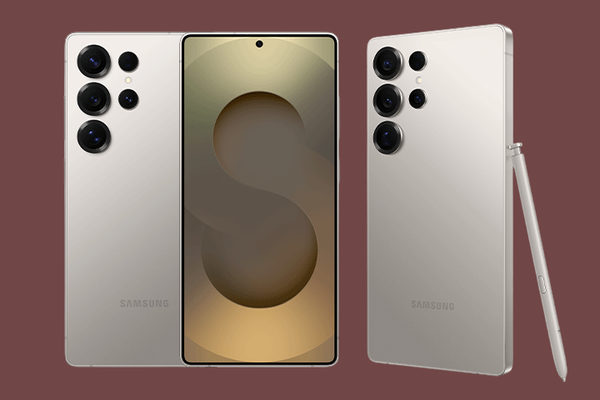In-Ear Monitors (IEMs): How Are They Different From Consumer Earphones?
IEMs and studio headphones have revolutionised how sound is experienced and monitored, catering to diverse needs within professional and personal realms.

Audio technology has evolved significantly over the years, creating specialised devices that cater to a range of needs, from casual listening to professional audio production. In-ear monitors (IEMs) and studio headphones are two such specialized tools. While IEMs are often associated with live performances and precise sound monitoring, studio headphones dominate the world of audio mixing and editing. Understanding their characteristics, purpose, and differences is vital for anyone passionate about audio, whether you're a musician, audiophile, or casual listener. This article explores the essence of IEMs, their differences from consumer earphones, the utility of studio headphones, and a comparative analysis between IEMs and studio headphones.
What Are In-Ear Monitors (IEMs)?
IEMs, short for In-Ear Monitors, are compact earphones designed for precise audio monitoring. These devices are commonly used by musicians, sound engineers, and audiophiles who require accurate sound representation. Unlike consumer earphones, which are typically optimized for casual music listening, IEMs prioritise clarity, isolation, and sound accuracy.
The history of in-ear monitors (IEMs) is deeply tied to the evolution of audio technology, especially the need for precise sound monitoring in live performances and studio environments. Here's a detailed exploration of how IEMs came into existence and evolved into the sophisticated devices we know today:
Origins of In-Ear Monitors
The concept of monitoring sound through small, portable devices originated with the invention of traditional earphones. However, these early devices were designed for general audio consumption and lacked the precision and isolation needed for professional applications. The Era of Stage Monitors was between 1960s-1970s. Before the advent of IEMs, wedge-shaped stage monitors were the primary solution for live performance monitoring. These floor-mounted speakers allowed performers to hear a mix of the music being played, ensuring they stayed in tune and on tempo. However, stage monitors had significant limitations:
- Feedback Issues: The close proximity of microphones and speakers often led to audio feedback.
- Inconsistent Sound Quality: The sound quality varied depending on the performer's position on stage.
- Volume Control: High volumes were necessary to compete with the audience and other stage noise, risking hearing damage.
These challenges created a demand for a more personal and precise monitoring solution.
Legacy and Importance
IEMs have become indispensable in both professional and personal audio realms. Their ability to provide unparalleled sound accuracy and isolation has not only improved the quality of live performances but also minimised the risk of hearing damage for professionals. They have also inspired innovations in earphone and headphone design, influencing the entire audio industry.
In-ear monitors stand as a testament to how necessity and innovation can drive technological progress. From addressing the practical challenges of stage monitoring to becoming a cornerstone of high-fidelity audio, IEMs have redefined how sound is experienced, both on stage and in everyday life. Manufacturers like Shure, Ultimate Ears, and Westone emerged as major players, developing high-performance IEMs for both professionals and audiophiles.
Features of IEMs:
- Sound Accuracy: IEMs provide a balanced and neutral sound signature. This ensures that no frequencies like bass, mids, or treble dominates, making them ideal for professional environments.
- Noise Isolation: IEMs achieve excellent passive noise isolation due to their snug, in-ear fit. Some models even incorporate custom-moulded earpieces for a perfect seal.
- Customisability: Many IEMs allow users to replace cables, change eartips, or even adjust filters for sound tuning.
- Compact and Portable: Their lightweight and compact nature makes IEMs highly portable, perfect for on-the-go use.
- Driver Configuration: IEMs often employ advanced driver technology, including dynamic, balanced armature, or hybrid driver setups, to deliver high-fidelity sound.
How IEMs Differ from Consumer Earphones
Consumer earphones are primarily designed for casual use, focusing on convenience and a pleasant listening experience. Here are the primary differences between IEMs and consumer earphones:
- Sound Tuning: Consumer earphones often emphasise bass and treble, offering a "fun" sound signature where as IEMs deliver a flat, neutral response tailored for critical listening.
- Noise Isolation: Consumer earphones provide moderate isolation, typically relying on ambient sound for safety during activities like jogging. The IEMs on the other hand prioritise passive isolation, often eliminating background noise for focused audio monitoring.
- Build Quality and Customisation: Consumer earphones are generally mass-produced with limited options for personalisation. IEMs feature robust construction, with options for detachable cables, custom-molded shells, and swappable eartips.
- Target Audience: Consumer earphones cater to general users who value convenience and affordability. IEMs target professionals who need precise audio representation.
What Are Studio Headphones and Why Are They Used?
Studio headphones are specialised over-ear headphones designed for professional audio applications like recording, mixing, and mastering. Unlike conventional headphones, studio headphones emphasize accuracy, ensuring that the sound reproduction is unaltered and true to the original recording.
Studio headphones and IEMs share the goal of providing accurate sound reproduction, but their design, use cases, and user experiences differ. Both offer neutral sound signatures essential for professional applications, such as mixing and monitoring. However, studio headphones are over-ear devices, offering wider soundstages and greater comfort for prolonged use, typically in controlled environments like studios. In contrast, IEMs are compact, in-ear devices designed for portability and superior noise isolation, making them ideal for live performances or mobile monitoring. While they cater to similar audiences—musicians, engineers, and audiophiles—their distinct features suit different professional and personal preferences.

Features of Studio Headphones:
- Neutral Sound Signature: Studio headphones provide a flat frequency response, ensuring no colorisation of the sound.
- Comfort for Extended Use: Designed for prolonged use, studio headphones feature plush ear cups and adjustable headbands for comfort.
- Durability: Studio headphones are built to withstand rigorous daily use in professional environments.
- Varied Designs (Open-Back vs. Closed-Back):
- Open-Back: These models allow sound to escape, creating a more natural soundstage but compromising isolation.
- Closed-Back: These models offer better isolation, making them suitable for tracking and recording in noisy environments.
Why Studio Headphones Are Used:
- Mixing and Mastering: Studio headphones are crucial for mixing and mastering audio as they provide accurate sound reproduction.
- Sound Quality Analysis: Professionals use them to evaluate minute details in audio tracks.
- Recording Sessions: Musicians and engineers rely on studio headphones for monitoring during recording sessions, ensuring accurate playback.
Comparing IEMs and Studio Headphones
Both IEMs and studio headphones are specialized tools, but they excel in different areas. Here's a detailed comparison:
| Feature | IEMs | Studio Headphones |
|---|---|---|
| Size and Portability | Compact and highly portable | Bulky, less portable |
| Noise Isolation | Excellent passive isolation | Depends on design (closed-back offers better isolation) |
| Sound Signature | Balanced and neutral | Flat and accurate |
| Comfort | Snug fit, may cause discomfort over long periods | Comfortable for extended use |
| Use Case | Live performances, on-the-go monitoring | Studio work, mixing, and mastering |
| Price Range | Varies widely, often expensive for custom models | Broad range, premium models are costly |
| Durability | High, with replaceable parts | Very durable, designed for professional use |
| Soundstage | Limited due to in-ear design | Wide, especially with open-back models |
Choosing Between IEMs and Studio Headphones
- Environment:
- Use IEMs in noisy environments or for live stage performances.
- Use studio headphones in controlled studio settings.
- Portability:
- Opt for IEMs if portability is a priority.
- Choose studio headphones for a dedicated workspace.
- Comfort:
- Studio headphones are better suited for long listening sessions.
- IEMs may cause fatigue during prolonged use due to their in-ear fit.
- Application:
- IEMs are ideal for musicians and on-the-go professionals.
- Studio headphones are best for mixing, mastering, and recording tasks.
Conclusion
Audio devices like in-ear monitors (IEMs) and studio headphones have revolutionized how sound is experienced and monitored, catering to diverse needs within professional and personal realms. IEMs shine in scenarios that demand precision, portability, and isolation, making them indispensable for live performances and on-the-go audio monitoring. Studio headphones, on the other hand, excel in controlled environments, providing unmatched comfort, accuracy, and a wide soundstage, critical for mixing, mastering, and studio recording.
The choice between these tools ultimately depends on individual requirements and use cases—whether you’re a musician needing clear monitoring on stage, an audio engineer perfecting a mix, or an audiophile seeking an authentic listening experience. Together, IEMs and studio headphones exemplify the incredible strides in audio technology, showing how innovation continues to refine the art of sound. By understanding their distinct roles, enthusiasts and professionals alike can enhance their auditory journey and achieve unparalleled clarity in their audio endeavors.




